
This was the day we had the biggest adventure of the trip. I wanted to get out of the city, and see more of the Colombian countryside, and some small towns. So Terry and I, and Graciela, signed up for a tour to the town of Jérico:

...about 110 kilometers (68 miles) from Medellín.
We almost didn't get to go on the tour. The previous evening, on our way to the tango show, we had stopped off at a Turibus ticket office to buy tickets for the tour, only to find that the office was closed. But we had been told that we could just buy tickets on the bus, so we weren't worried. But the next morning (way too early in the morning for a vacation), when the bus showed up, they said it was full. In the first place, it wasn't really a bus, but a large van. And it was full of passengers - apparently, a large group of people, who all worked in the same office, were taking the tour that day.
Well, we pleaded our case, and the tour guide discussed it with the other passengers, and with some inventive rearrangement of bodies, and a great deal of togetherness, we all squeezed into the van and took off.
Our tour guide was Lina:
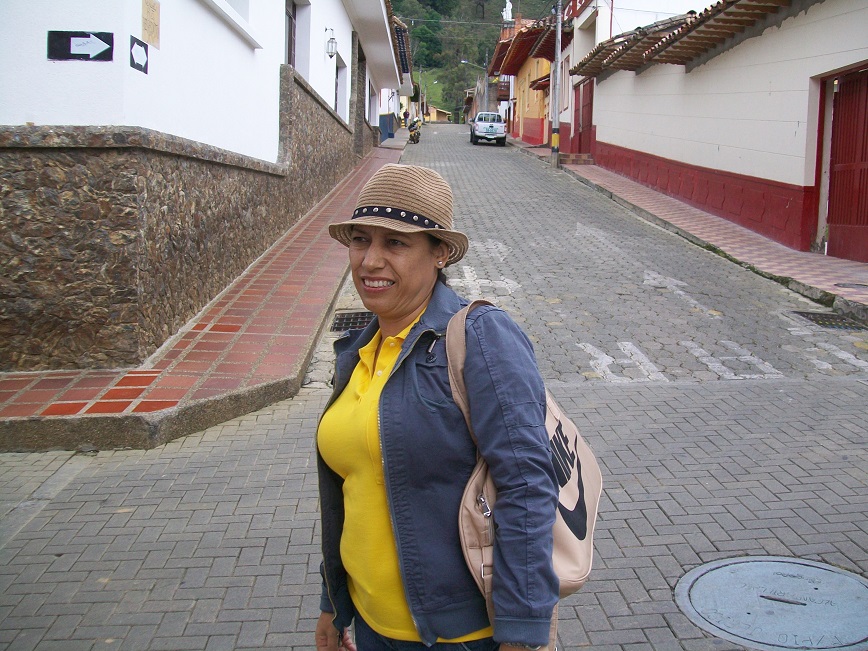
...and our driver was Andres:
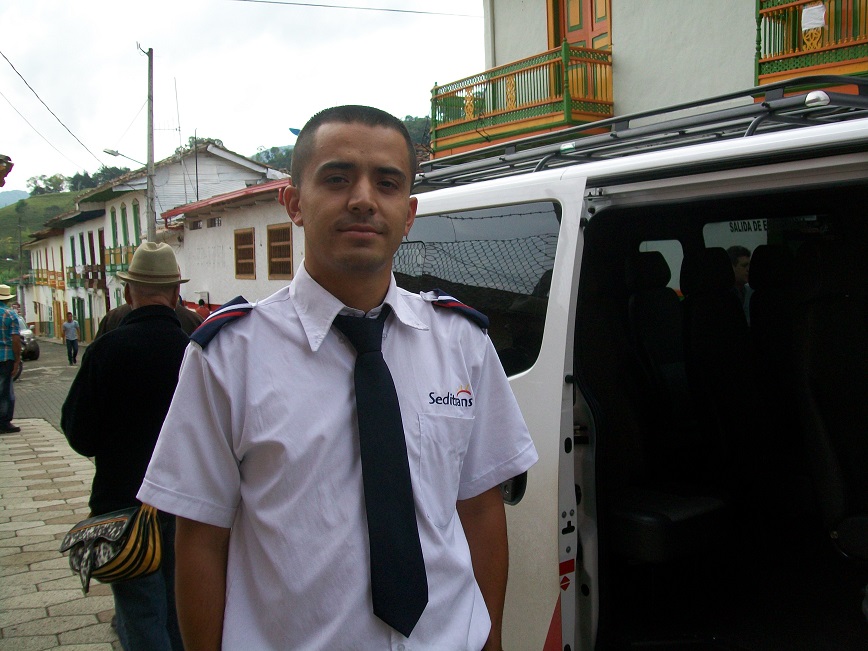
...and once again, I was the only non-Spanish speaker in the crowd. I was learning how it felt to be a minority.
We drove south out of the city, through an industrial zone, and stopped for breakfast at a small roadside diner with the inventive name of Sancho Paisa:
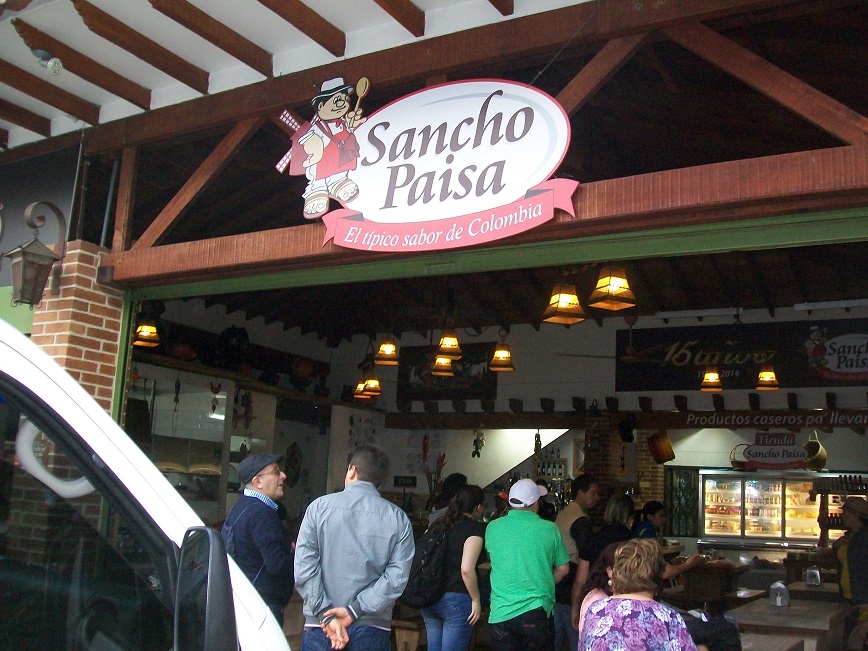
The word "paisa" refers to someone from the northwestern region of Colombia, and of course the name is a takeoff on the character of Sancho Panza from Don Quixote.
And then we got back on the road and drove up into the hills. It was a long drive on narrow, twisty roads. Now the thing is, I enjoy driving on narrow, twisty mountain roads... when I'm driving. But when I'm riding in the back, it's another story. I was carsick. I didn't lose my breakfast, but my head hurt and I was nauseous. No one else appeared to be having any trouble, though - everyone was talking and laughing and singing and having a great time. I suffered in silence.
But I wasn't too sick to take pictures. Here are a bunch of pictures of the Colombian countryside:
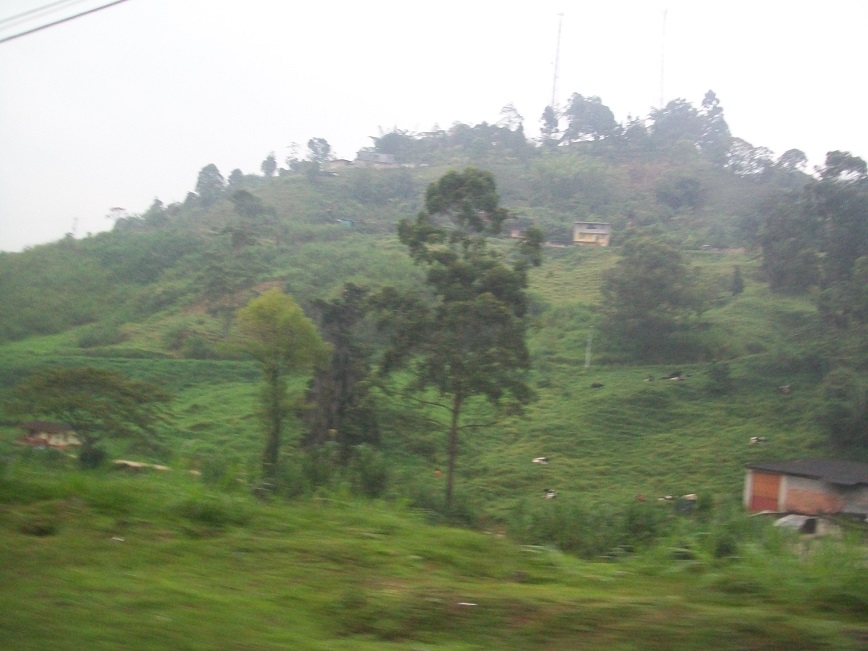

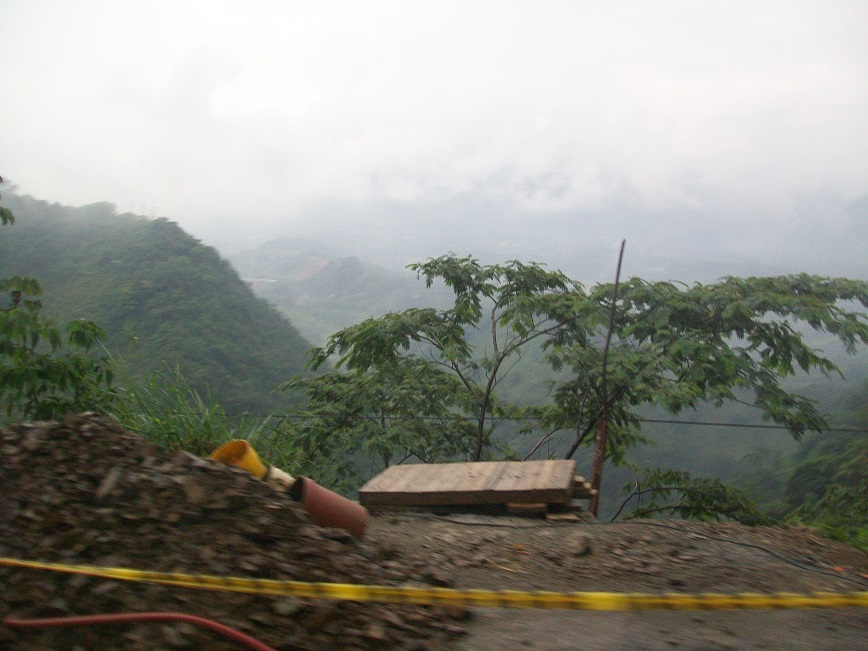

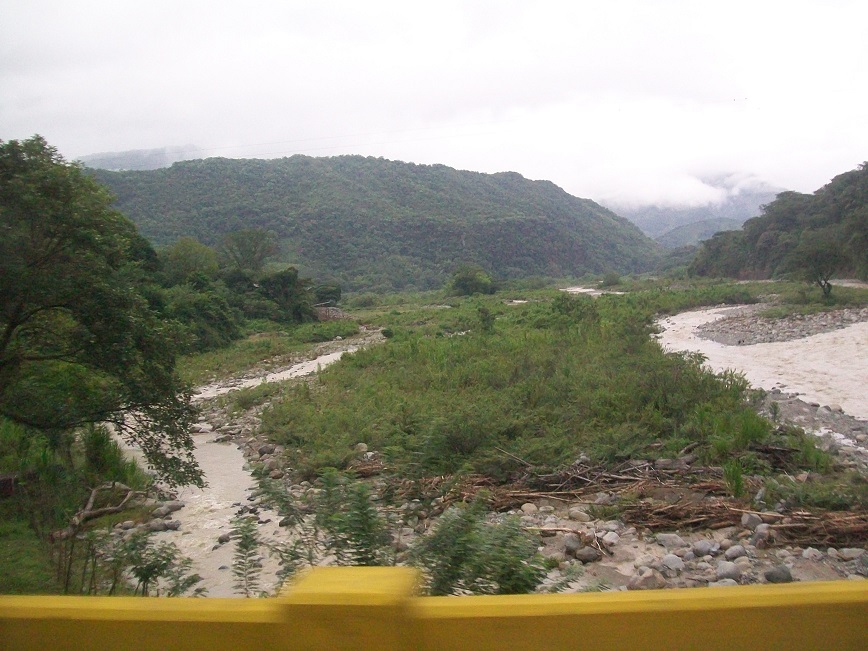

Okay, that last picture isn't exactly scenic. But it does help give an idea of the kind of day it was - cold, cloudy and damp. It rained on and off through the day - no heavy downpour, just a series of light showers.
Somewhere along the way, we passed a schoolyard in a small town, where I took this picture of some kids playing futbol - or, as we Yanks call it, soccer:

Just to give you an idea of the size of Jérico, here's a close up map of the town:
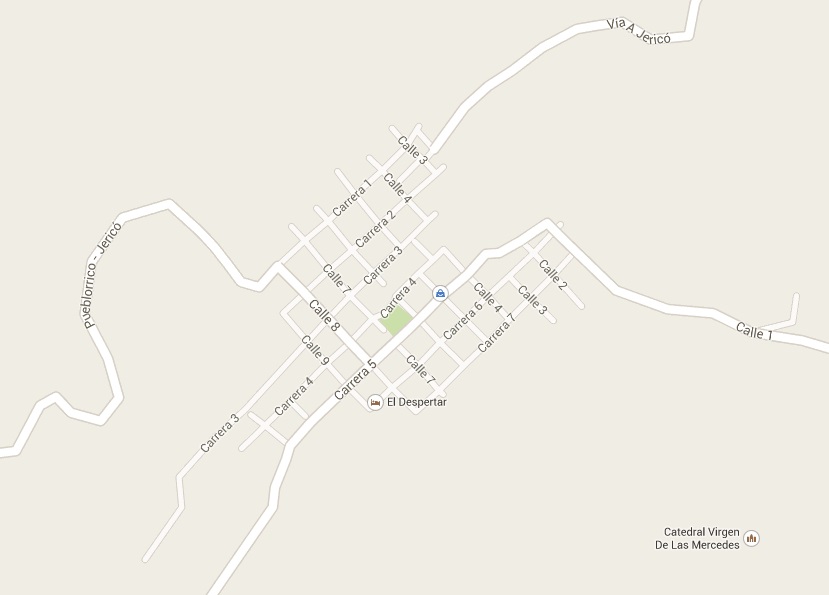
Not much to it, as you can see. Here are some pictures of the streets of Jérico
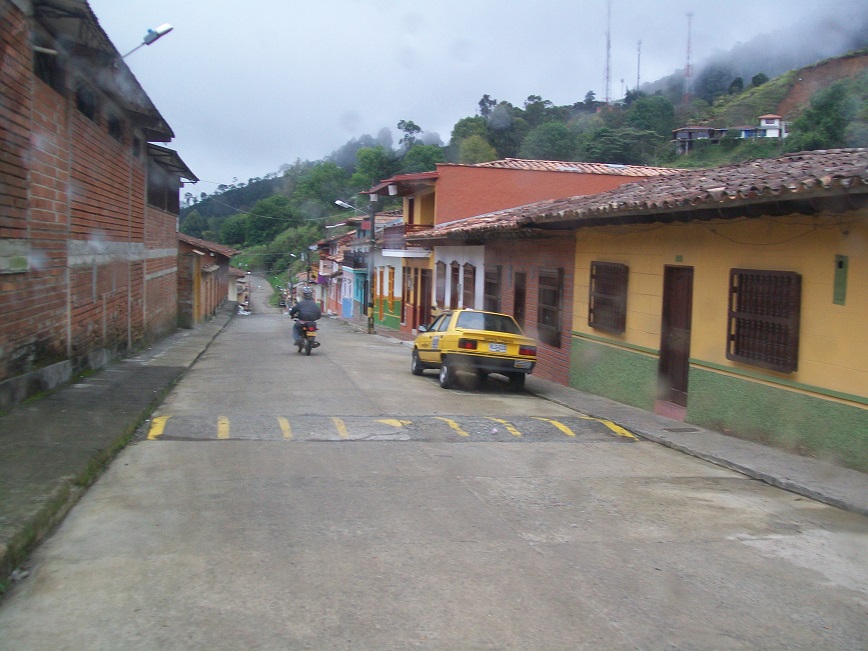
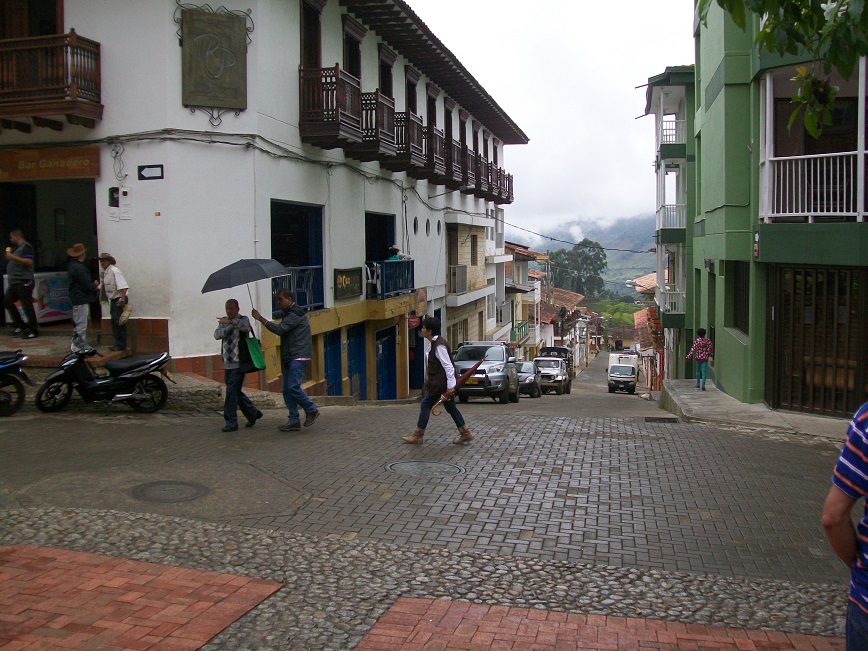



Part of the town is build up the side of a hill, and in the last two pictures, you can see that some of the streets are quite steep, as a result. Although it's not easy to see in those pictures, those steep streets are actually flights of stairs.
A couple of pages back, when I told about going to Pueblito Paisa, the imitation country village on Cerro Nutibara in Medellín, I mentioned the bright colors, and said I'd have more to say about them later. Well, later is now: the buildings in Jérico were a fantasyland of bright colors:
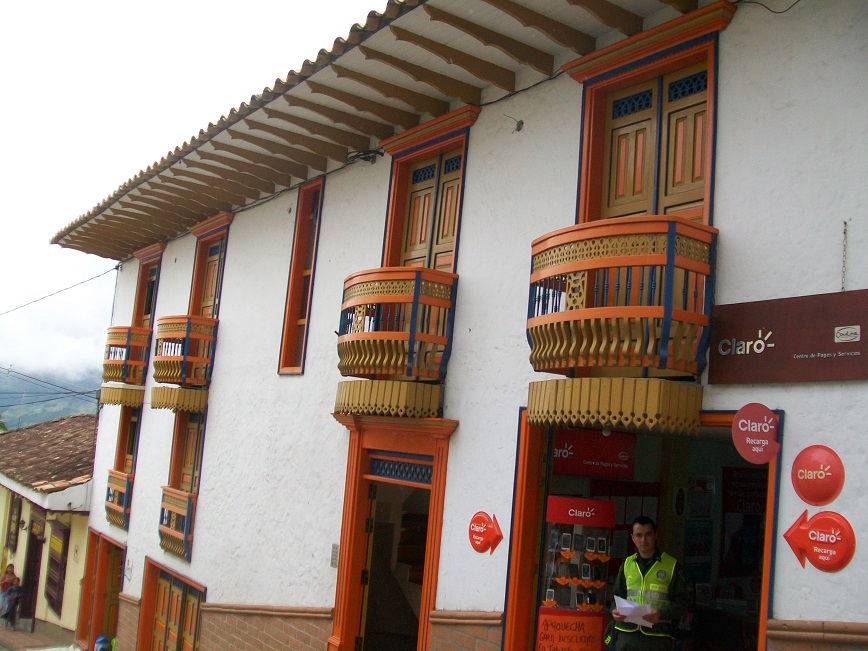
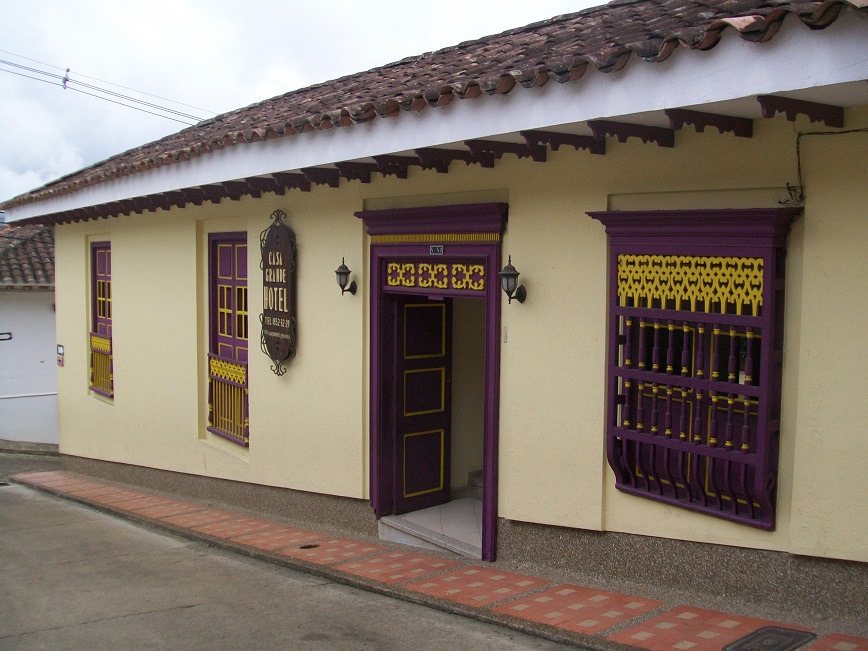
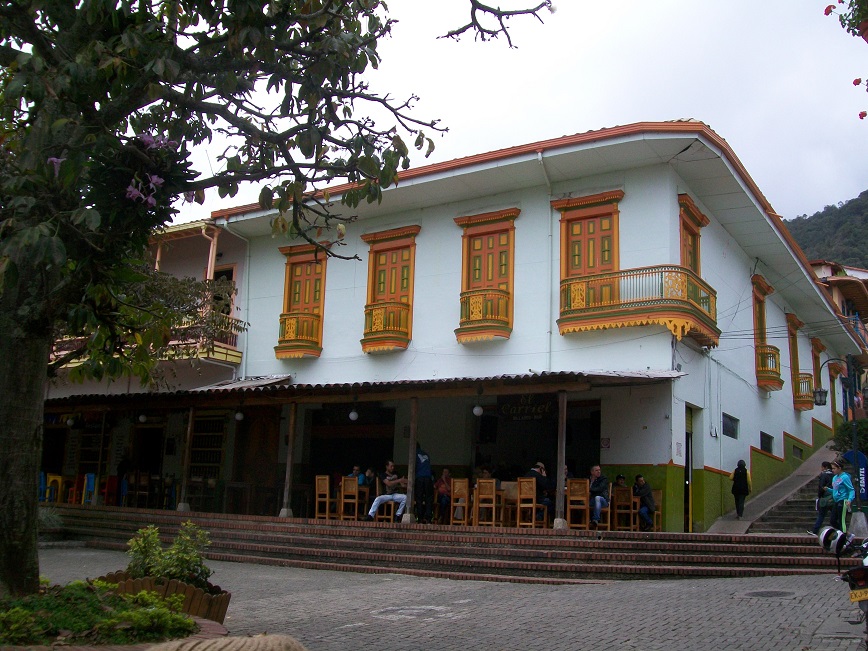
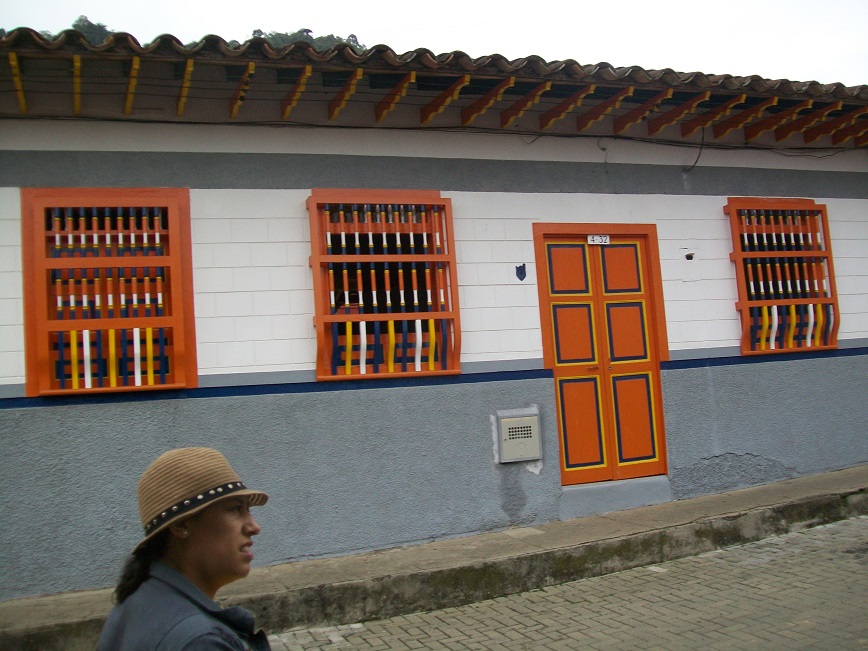
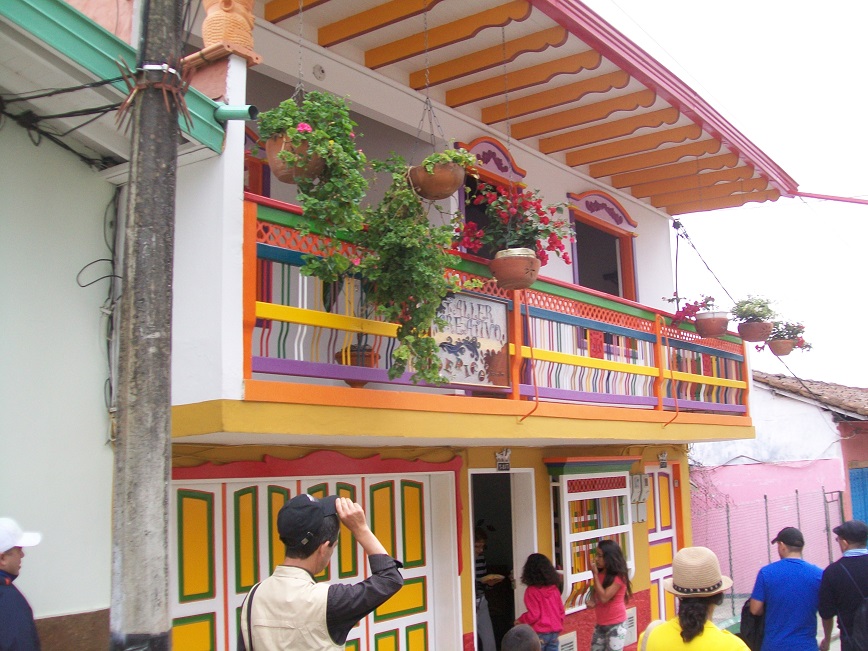
My pictures don't do them justice. They were delightful.
I also noticed that on many of the sidewalks, the concrete squares that make up the walk are each engraved with a design, which repeats all the way down the street - here's an example:
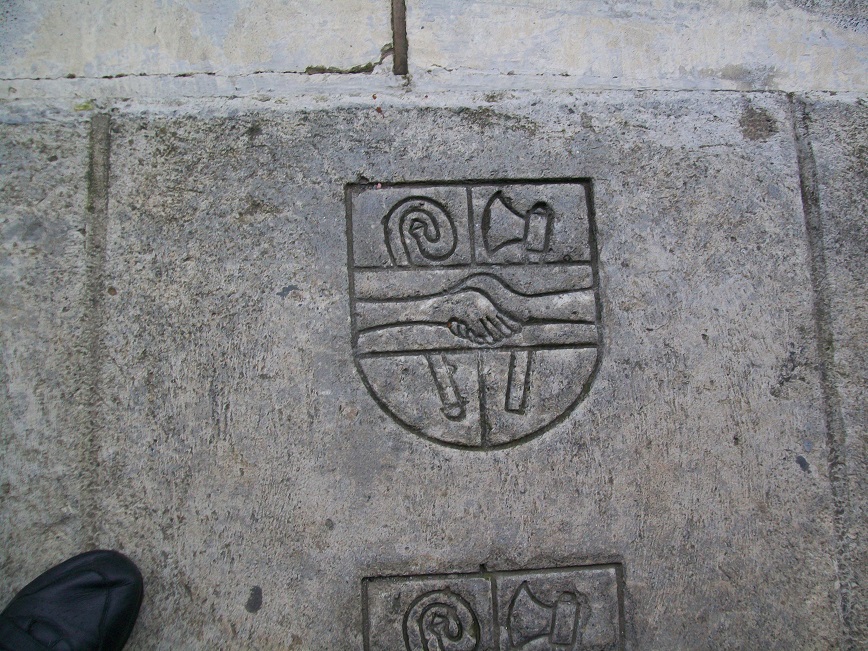
There was a lot of interesting architecture in the town - here's a picture of Terry and Graciela inspecting an ornate door:

As in most small towns in Latin America, there was a central plaza:
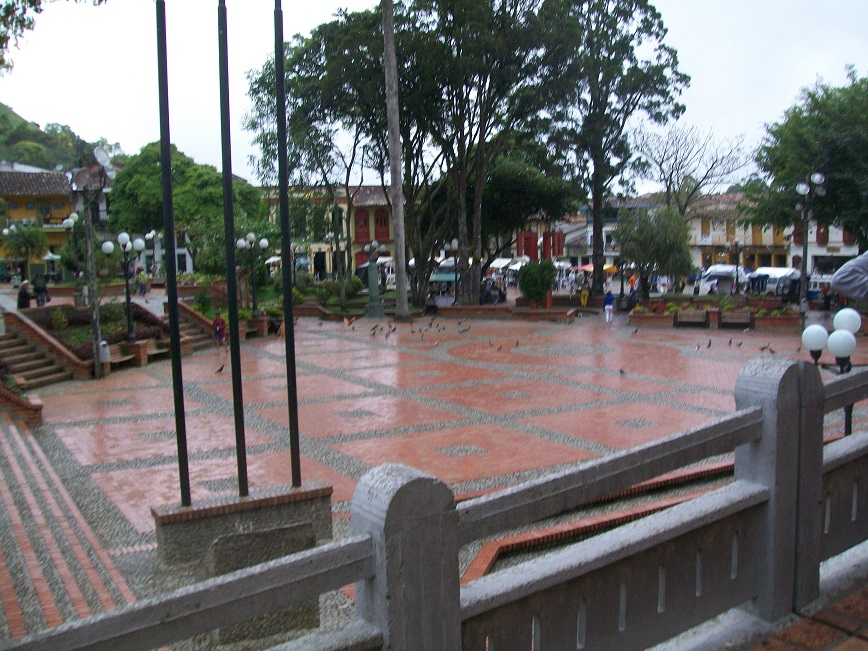
...with lots of street vendors:
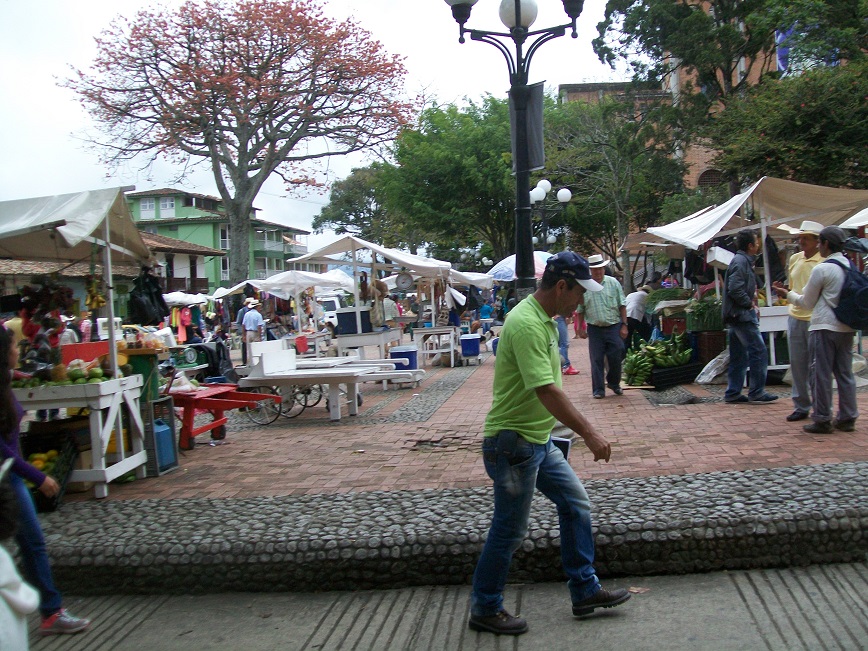
...and taxis:
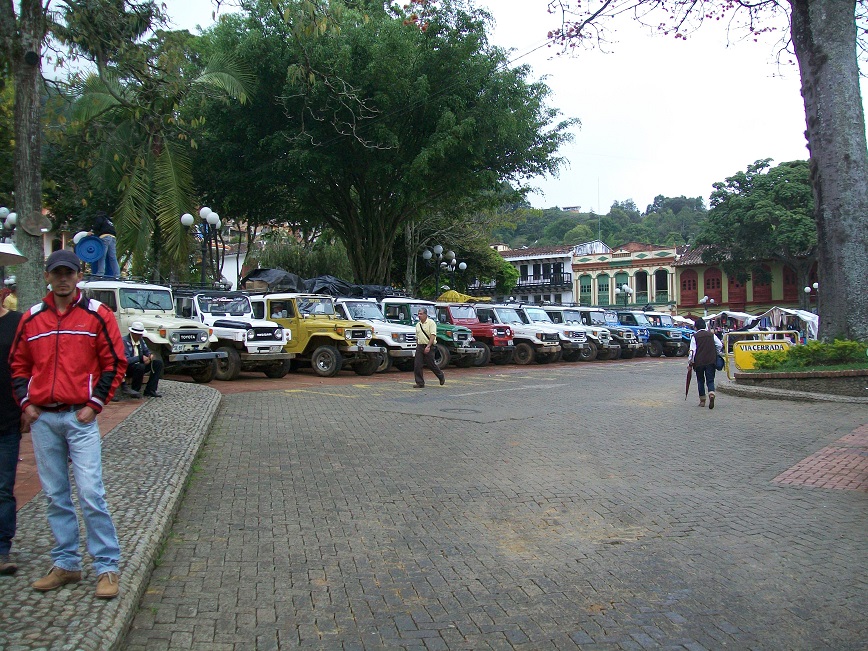
Walking around the town, I was amused to notice that even in a small country village in the hills of Colombia, the 21st century still makes its presence known:
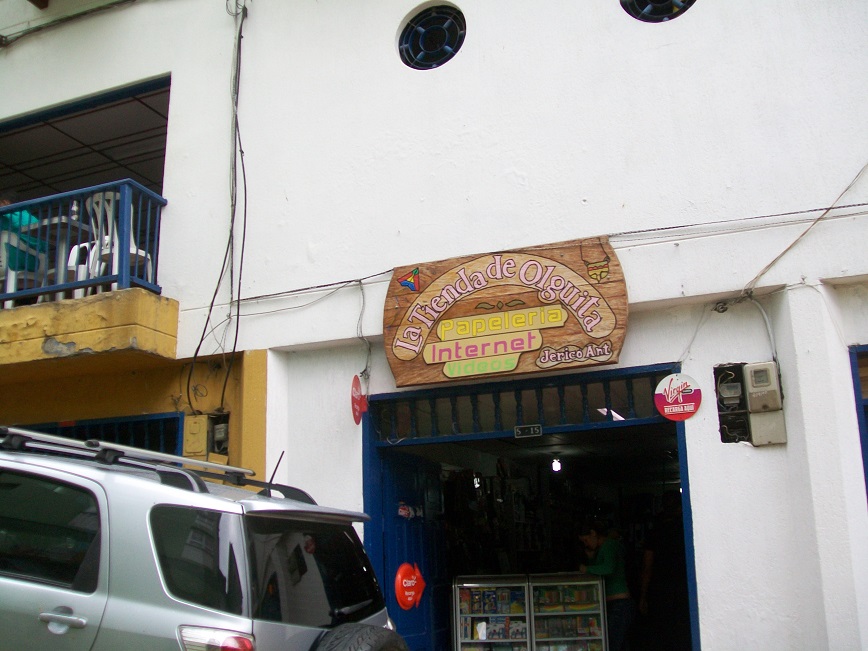
The plaza is overlooked by a large church:
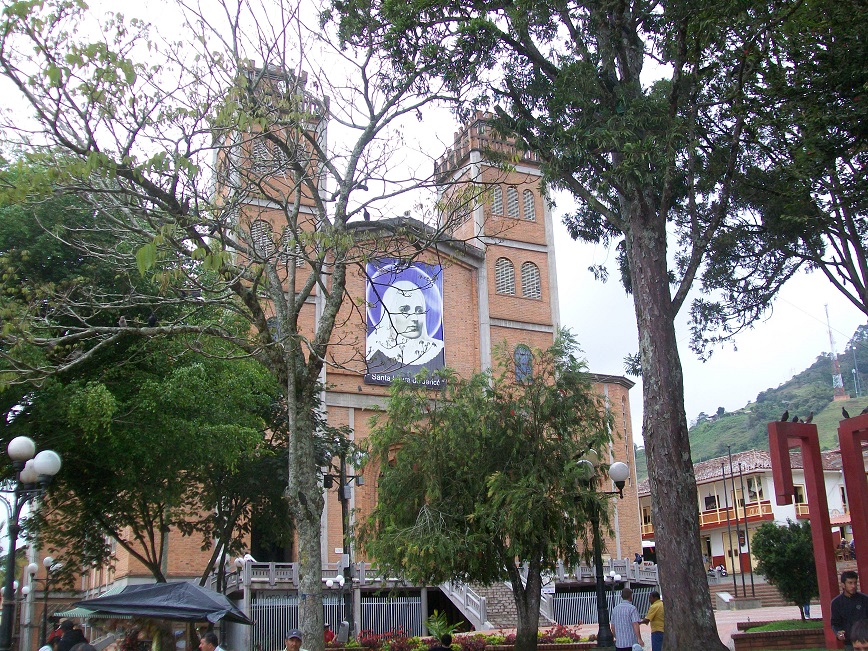
...which turned out to be our first stop.
Jericó has its own local saint, Laura of Saint Catherine of Siena (w) , born María Laura Montoya Upegui (oo-PEG-ee) in Jericó in 1874, and canonized by Pope Francis in 2013. She was best known for her work with the indigenous peoples of Colombia. That's her picture on the front of the church; there was also a statue of her outside the church:
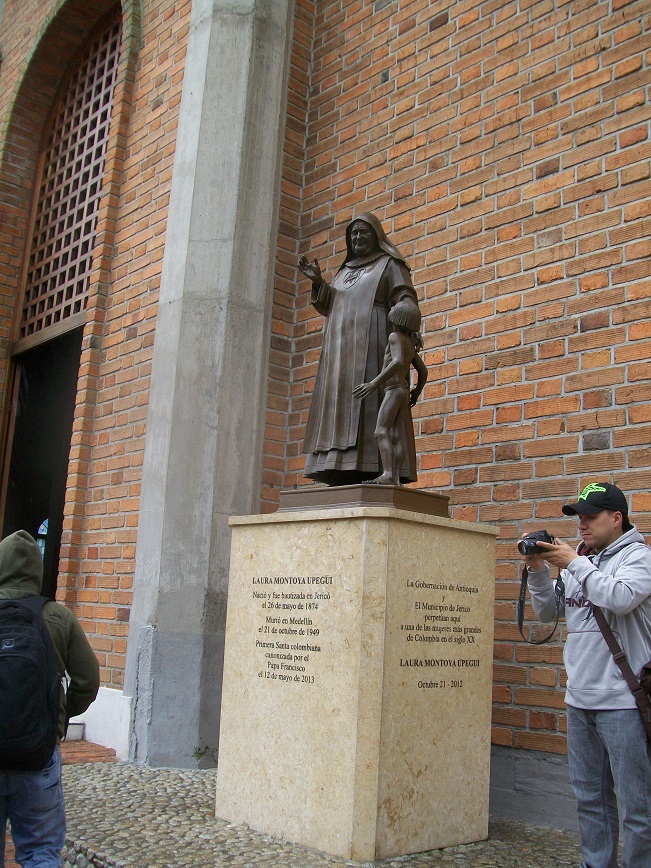
...and another one inside the church:
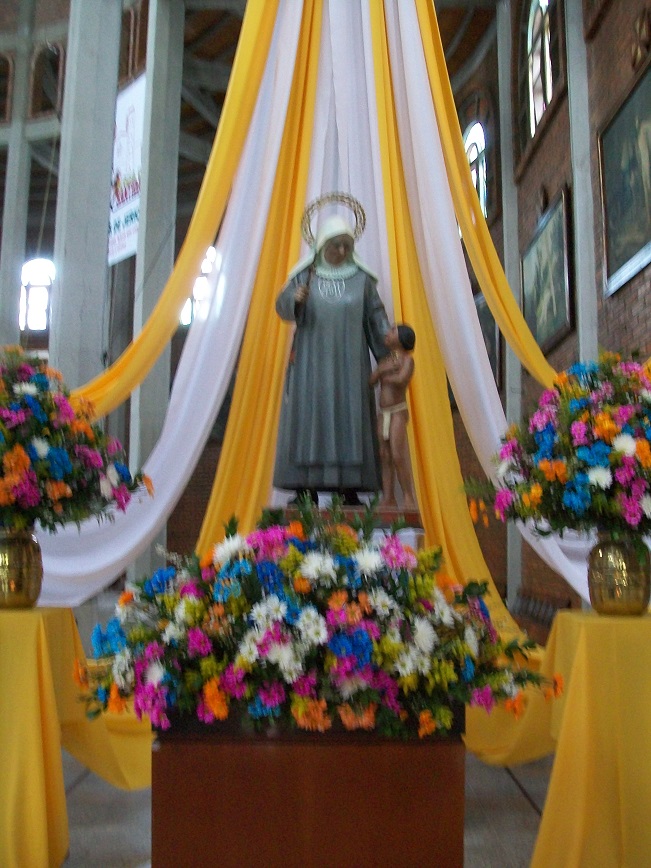
...and pictures of her over the altar:
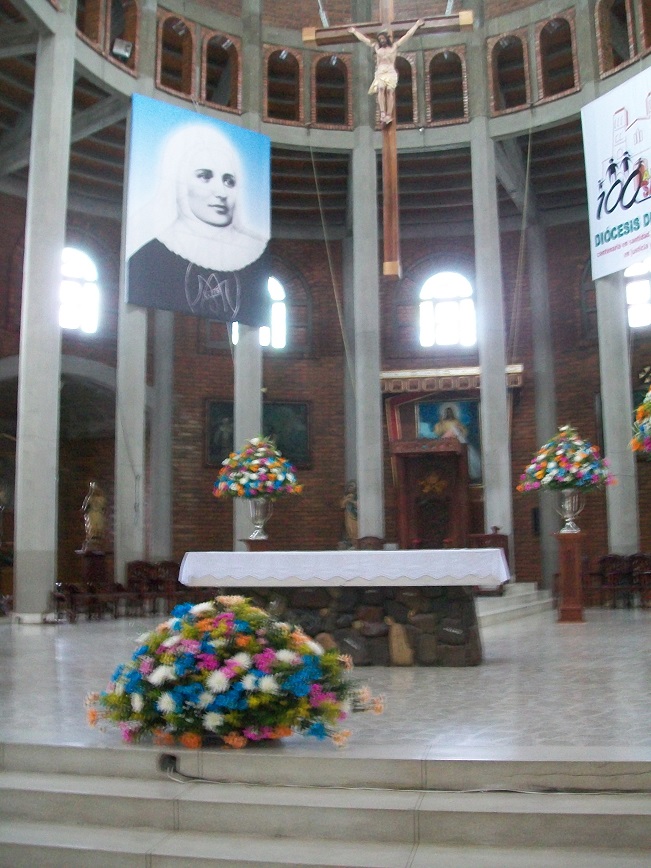
...and in one of the small chapels on the side of the main sanctuary:

They're definitely proud of their local heroine.
Our next stop was at an anthropological museum. This was less than impressive. The first thing we looked at was an exhibit of futbol jerseys! Not being futbol fans, or sports fans in general, Terry and I were underwhelmed. There was also an exhibit of artworks by a local artist, whose name escapes me. I am interested in art, but this person's work didn't do much for me. Somewhat more interesting were some exhibits of archeological artifcacts, like these figurines:
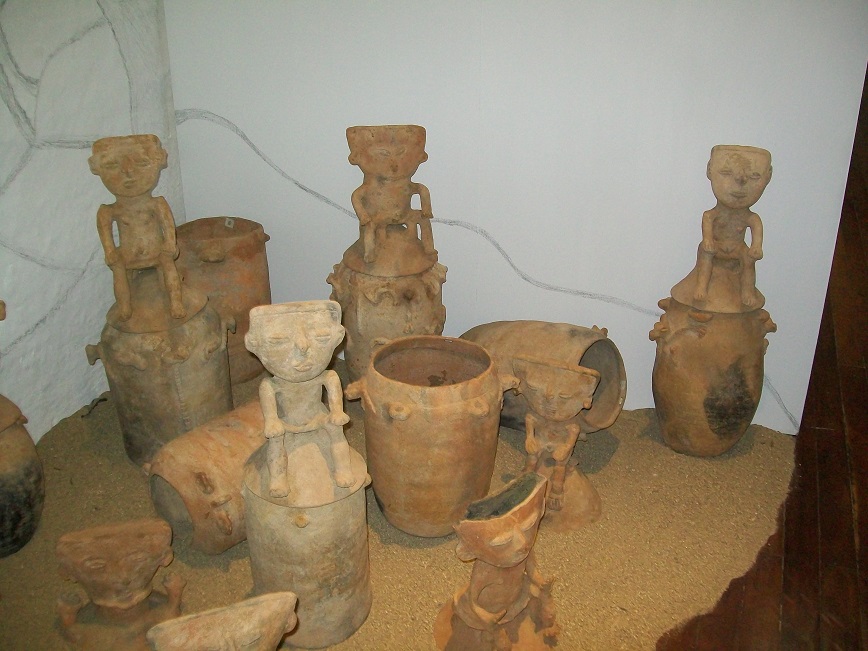
...which reminded me of some of the things I had seen at the Museo de Oro in Bogotá. There was also this object:
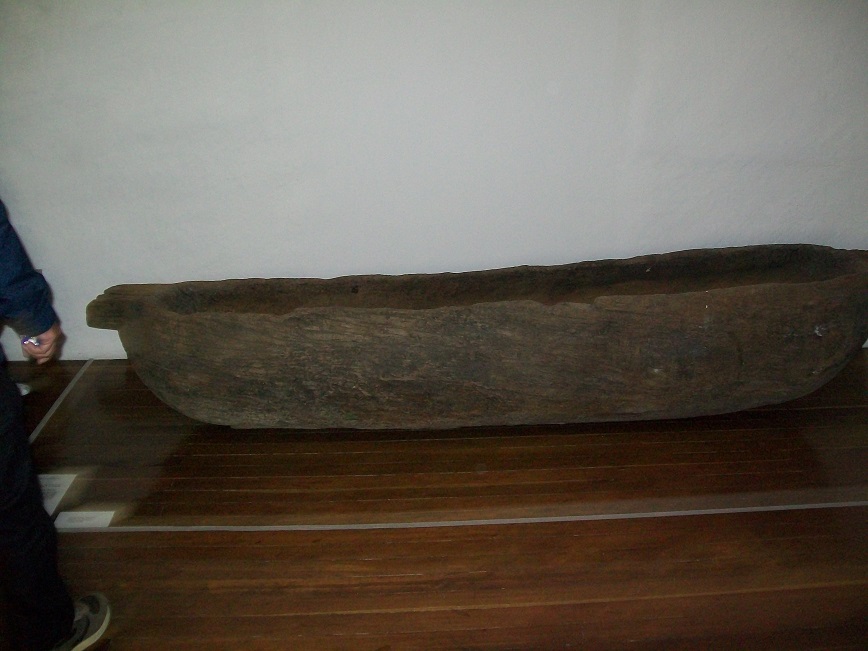
...which I at first thought was a canoe, but which turned out to be a sarcophagus, i.e., a coffin
At one point, I looked over a balcony rail to an atrium below, and saw some artisans working on building and painting a set of model buildings:
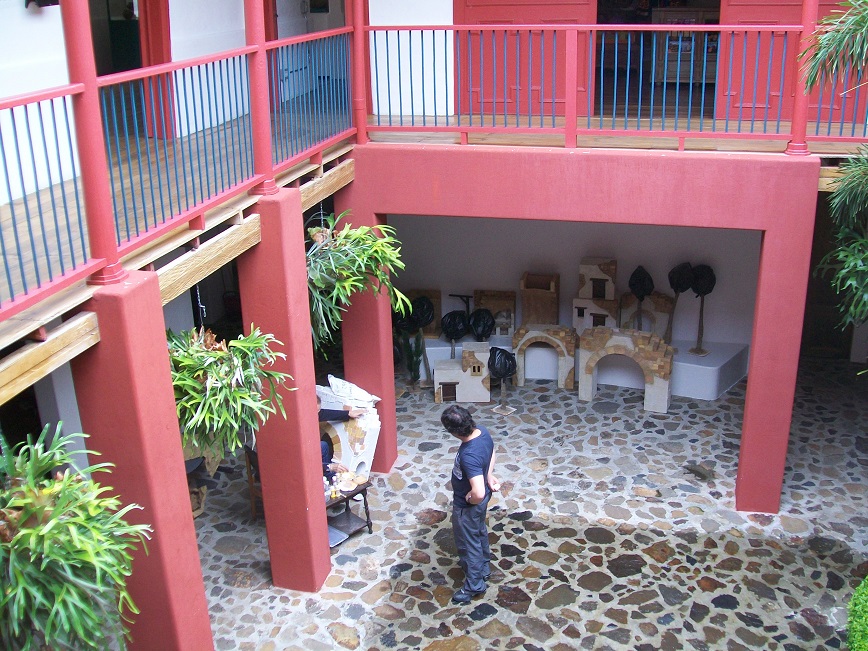
...although I never found out what they were for.
Our next stop was a workshop where they make carriels. Carriels are small leather satchels, made from cowhide, which are very popular in the Antioquia region, and are something of a symbol of Paisa culture.
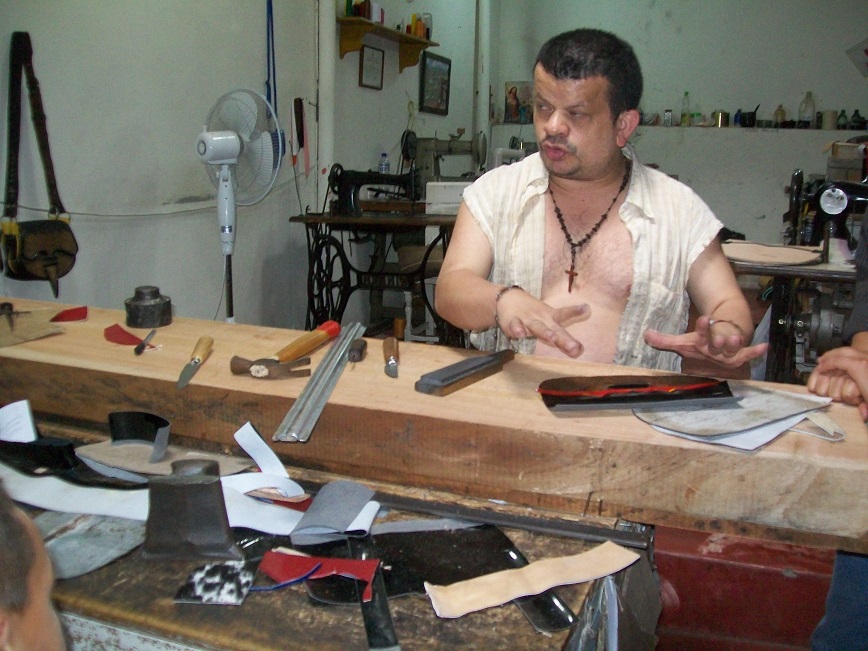
A worker explains how carriels are made
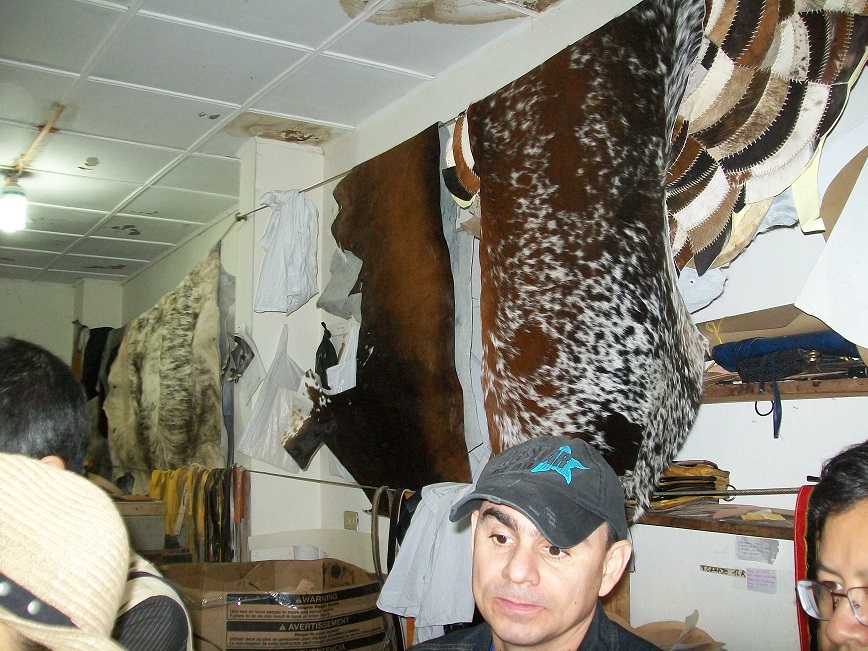
Cow hides waiting to become carriels
I never got a picture of an actual carriel, but here's one I found on the Internet:

If you click on the picture, you can visit the site hechoenjerico.com (made in Jérico), where you can buy your own carriel. Don't have a heart attack over the prices - remember, they're in Colombian pesos. As a rough guide, divide by 2000.
The next stop was lunch, at a restaurant called La Terrazza:
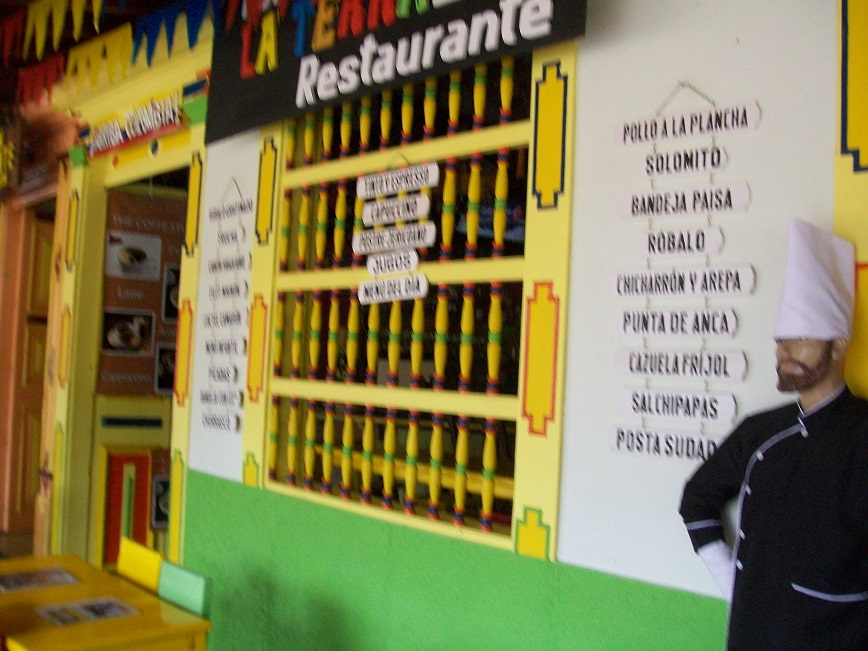
...which had interesting decorations inside:
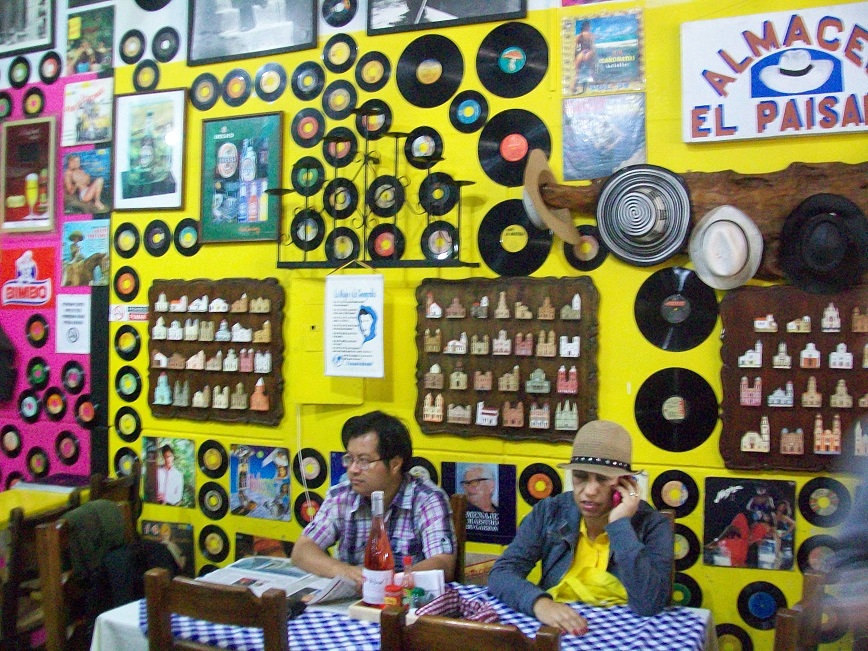

There was also this model of the church:
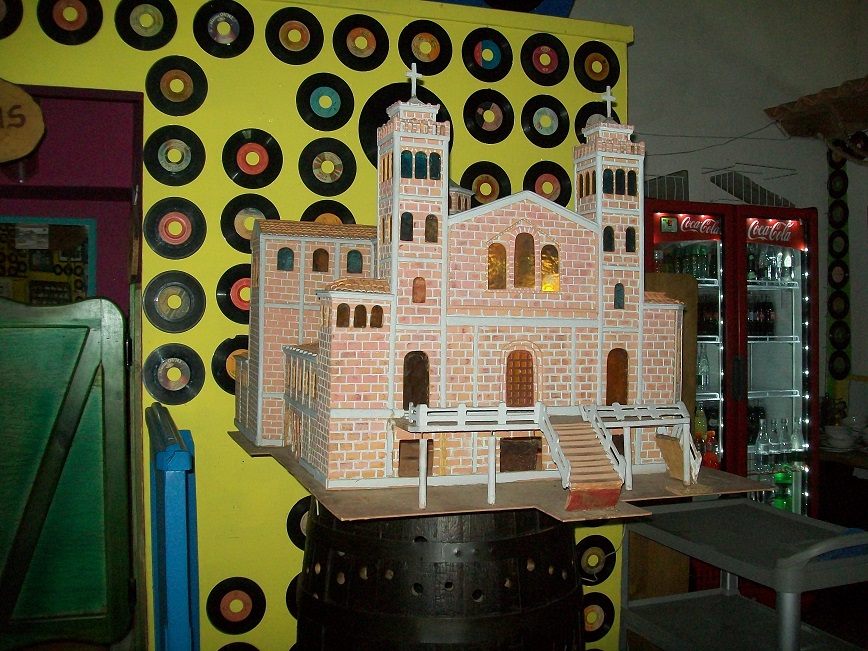
Somewhere along the way, we had picked up an extra member of our tour group, a local boy named Samuel (pronounced sam-WELL):
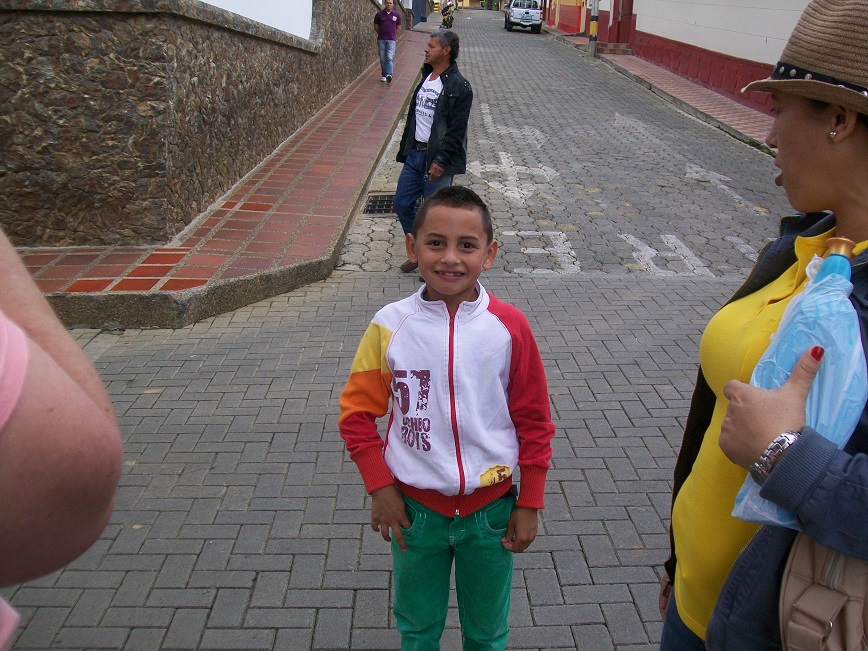
Lina said that he always tags along on her tours - she calls him her "tour guide in training."
Walking down the street after lunch, I saw a group of nuns going by:

I also noticed these signs all over town:
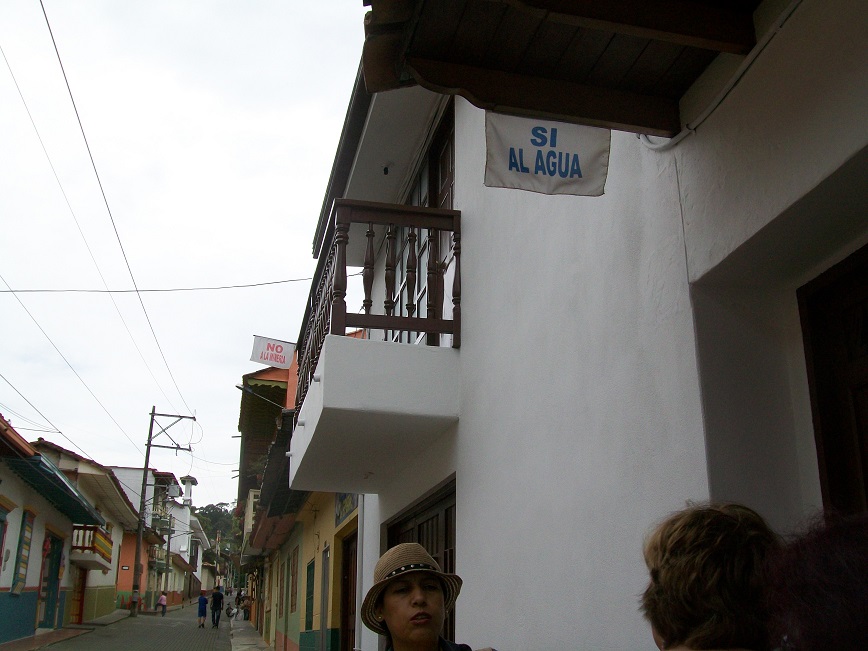
The one in front says "Yes to water," and the other says "No to mining." I asked Lina about the signs, and she explained that there's a company that wants to do mining in the area (possibly for gold, but I don't remember), and the locals are against it, because they're concerned that it will contaminate their water.
Our next stop was Madre Laura's house. Like I said, they're quite proud of their hometown heroine, and the house where she grew up is now a muesum dedicated to her life and work. The front room of the house has been converted into a small chapel, where a nun belonging to her order gave us a short talk:

...and then we wandered about the rest of the house, looking at exhibits, including several books written by Madre Laura, and a large map of the world showing locations where members of her order are doing work. There was also a gift shop downstairs, and the nun who had given the talk assured us that all items in the gift shop had been blessed, although she didn't say by whom. Terry and I passed on the gift shop, but some of the others in the group, including Lina, made some purchases.
Next we visited the Botanical Gardens. Terry elected to wait outside, while Graciela and I went in. But first, we stopped at the entrance for this group picture:

(I bought that rain hat especially for this trip, and that was the only day I got to wear it.)
The gardens were nice, but they were built straight up the side of a hill, and the path just kept climbing up and up. After a while, Graciela and I were tired. We came to a place where there was a bench, and we decided to sit and wait while the others went on up - which, in retrospect may not have been the best plan. Because they were gone a long time - long enough that I began to get scared they had gone down a different way and left us behind. But of course, they eventually came back, and we all went back down and rejoined Terry, who must have been wondering what the heck had happened to us.
We then stopped for coffee at a place called La Ceiba:

...which, apparently, is a kind of tree, known in English as a silk cotton tree. After sitting for a while, I went off (at Terry's request) to buy some coffee as gifts for friends back home.
The tour was over, but we still had some free time before boarding the van to go back. Terry and I wanted to find a panaderia (bakery) to get a snack before hitting the road. So Graciela and I tagged along after a group of our fellow tourists, in the belief that they were also going in search of a panaderia. After a while, the group turned into a building, and we followed - and discovered that they weren't going to a panaderia, or any other kind of store, after all. One of the guys in the group had a grandmother that lived in Jérico, and they were visiting her! I was quite embarrassed at crashing the party, and made apologies in my fractured Spanish, but they were very gracious, and laughed it off.
We then succeeded in finding a panaderia and getting our snack, and then we all piled onto the van and started back down. Shortly after we started, we made a stop at a roadside snack stand, where a woman was making homemade empanadas:
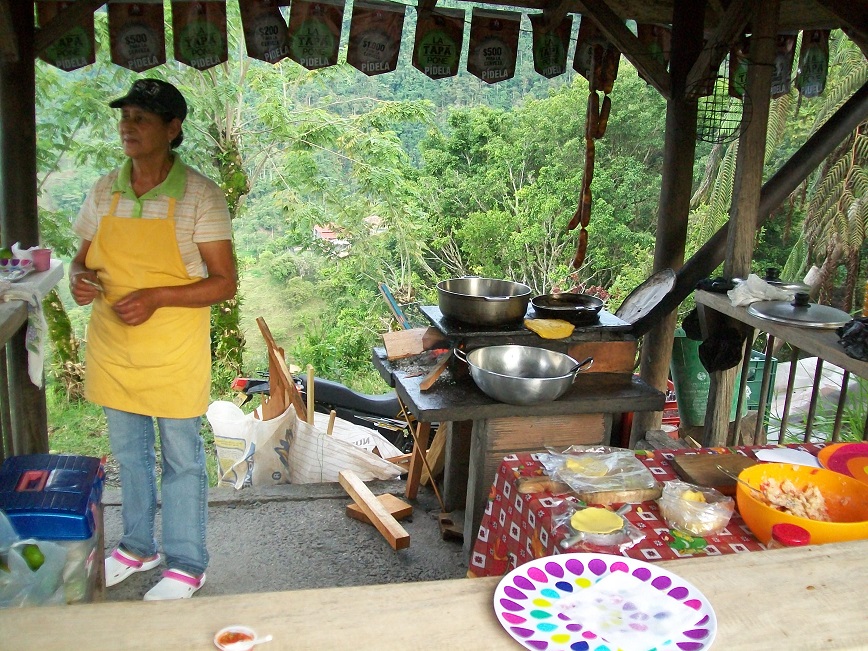
An empanada (w) is like a turnover, but with meat or cheese instead of fruit. They're very common in Central and South America. The ones this lady was making were quite small - about two bites each - with a meat filling that I think was chicken. She kept turning them out as fast as we could eat them, and we were rapidly scarfing them down. Several of our fellow tourists bought sacks of them to go.
While we were there, I took some more pictures of the countryside, and attempted to stitch three of them together into a panoramic view:

Not perfect, but it gives the general idea.
And then we got back on the road for the long drive back to Medellín. And I was carsick again. And again, everyone else was fine, laughing, talking and singing. Graciela entertained everyone with some songs. And again, I didn't know what anyone was saying - until at one point, the entire van suddenly erupted in loud cheers, and everyone began singing "Happy Birthday." I said to Terry, "I see you made the mistake of telling them that tomorrow's your birthday!"
We made one more stop, at a fish restaurant, where everyone had fish and chips... or I guess you'd call them pescado y papas. In any case, I was still queasy from the drive, and not in the mood for eating anything, particularly not fried fish. So I abstained. It's too bad, because Terry and Graciela told me the fish was very good.
We made it back alive, caught a cab home, and went right to bed.